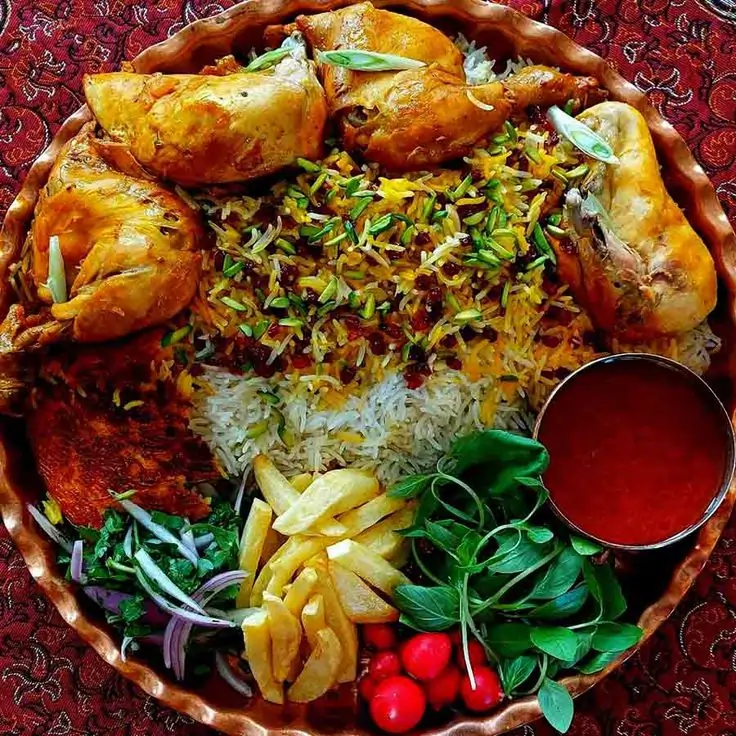
Delicious Iranian Cuisine: Popular Iranian Dishes
Iranian cuisine is much more than just food—it’s a window into the nation’s rich culture and centuries-old culinary heritage. With simple ingredients, Persian dishes create unforgettable flavors that showcase the skill and creativity of countless generations of home cooks. Every Iranian family has its own unique “cooking secrets” that make their recipes stand out. In this article, we’re going to introduce you to some famous Iranian dishes which can be found in Persian restaurants and household and share the tricks and tips passed down through generations of Iranian “kitchen masters.”
Iranian cuisine is a blend of rich flavors, fresh herbs, and aromatic spices like saffron and turmeric. Signature dishes include Chelo Kabab (saffron rice with grilled meat), Ghormeh Sabzi (herb stew), and Fesenjan (walnut-pomegranate stew). Meals are often served with yogurt, fresh herbs, and flatbreads, reflecting a culture where food is a celebration of flavor and hospitality.
Popular Iranian Dishes
Iran is truly a land of flavors and colors, with a variety of dishes that have become staples in Iranian homes. The most beloved Iranian dishes are often hearty stews, flavorful kabobs, and savory rice dishes that bring communities together at family gatherings and special occasions.
Dishes like Ghormeh Sabzi, Koobideh Kabob, Zereshk Polo with Chicken, and Fesenjan are among the top favorites. These meals are crafted with fresh and natural ingredients, cooked with care, and bursting with vibrant flavors that leave everyone wanting more. Their popularity lies in the unique balance of aromas, textures, and flavors that have been perfected over generations.
The Secret Behind Iran’s Culinary Diversity
The culinary diversity in Iran reflects the country’s four seasons and varied climates. Each region offers its own unique dishes, tailored to the local crops and customs. For example, the southern regions of Iran focus on flavorful seafood like Ghalieh Mahi, while the northern regions offer comforting, veggie-rich dishes like Baghali Ghatogh.
The thoughtful use of fresh herbs, slow cooking techniques, and signature spices are the secrets that make Iranian cuisine a true masterpiece. Moreover, the culture of family gatherings and hospitality has inspired Iranians to get creative in their cooking, ensuring that every meal feels extra special.
The Most Delicious Iranian Dish
Choosing the most delicious Iranian dish is a tough task—it really depends on your taste and preferred flavors. However, if you ask most Iranians, Ghormeh Sabzi easily tops the charts. This hearty herb stew, made with fresh greens, beans, tender meat, and dried limes, creates a magical flavor experience. Paired with Persian-style rice, Ghormeh Sabzi is a meal you’ll never forget. Other contenders for this title include Fesenjan, known for its creamy walnut and pomegranate sauce, and Tahchin, a saffron-rich layered rice dish that’s as stunning as it is delicious.
The Favorite Iranian Dish Among Foreigners
For tourists exploring Iranian cuisine, Koobideh Kabob—juicy minced meat kabobs grilled over charcoal—is a clear standout. Its smoky aroma and simple yet flavorful seasoning win the hearts of everyone who tries it. Another favorite among foreigners is Zereshk Polo with Chicken, thanks to the visual beauty and unique flavors of saffron rice mixed with ruby-red barberries. Fesenjoon, with its sweet-and-sour walnut and pomegranate sauce, is another dish that’s loved for its rich texture and surprising flavor. It’s easy to see why these dishes capture the attention of anyone learning about Persian culinary traditions.
Signature Iranian Dishes & Cooking Tips
1. Ghormeh Sabzi: Iconic Persian Herb Stew
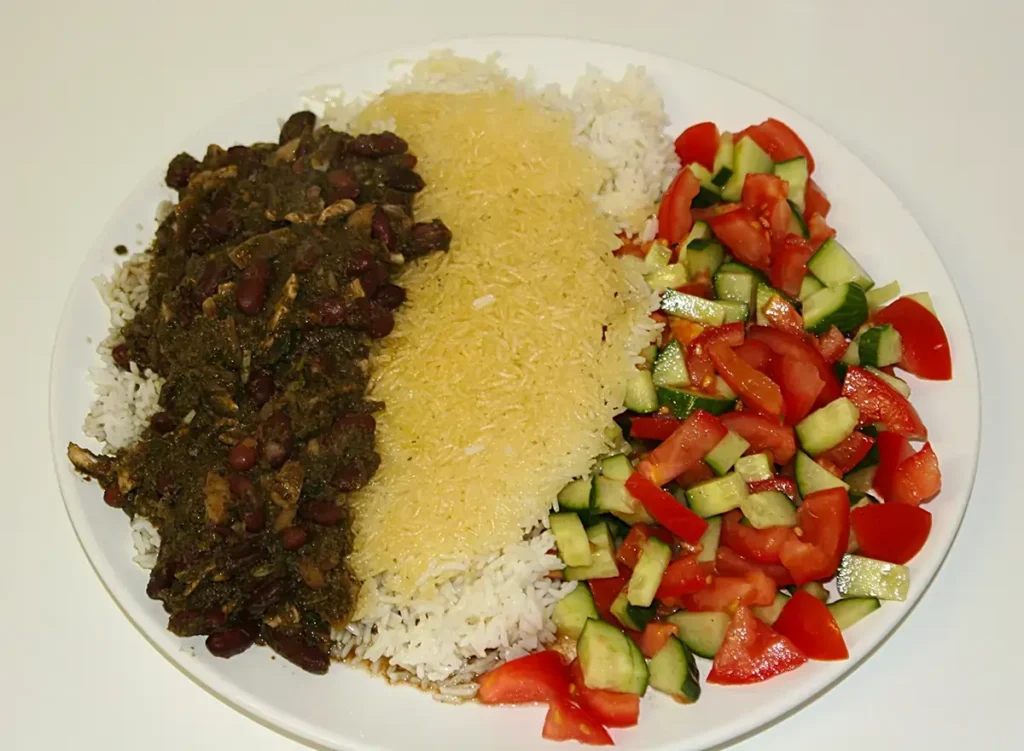
Ingredients:
Turmeric, salt, and pepper: To taste
Fresh herbs for Ghormeh Sabzi (parsley, leek, fenugreek): 500g
Red kidney beans or pinto beans: 1 cup
Stew meat (lamb or beef): 300g
Dried limes: 4
Onion: 1 large
Oil: As needed
Ghormeh Sabzi is considered the king of Persian stews. With its aromatic herbs, dried limes, and tender meat, this dish is a nostalgic masterpiece for all Iranians. If you want a perfectly cooked Ghormeh Sabzi, sauté the herbs gently to release their oil. Make sure to soak the beans overnight, and don’t forget to poke small holes in the dried limes to avoid bitterness!
Instructions:
- Prepare the beans: Soak them overnight and drain.
- Sauté the onion: Dice and fry in oil until golden. Add the meat, turmeric, and pepper, and cook until browned.
- Cook the herbs: In a separate pan, lightly fry the finely chopped herbs until fragrant.
- Assemble the stew: Add the herbs, beans, and limes to the meat along with boiling water. Simmer for several hours.
- Serve: Taste for salt towards the end, and serve hot with Persian-style rice.
2. Koobideh Kabob: Grilled Perfection
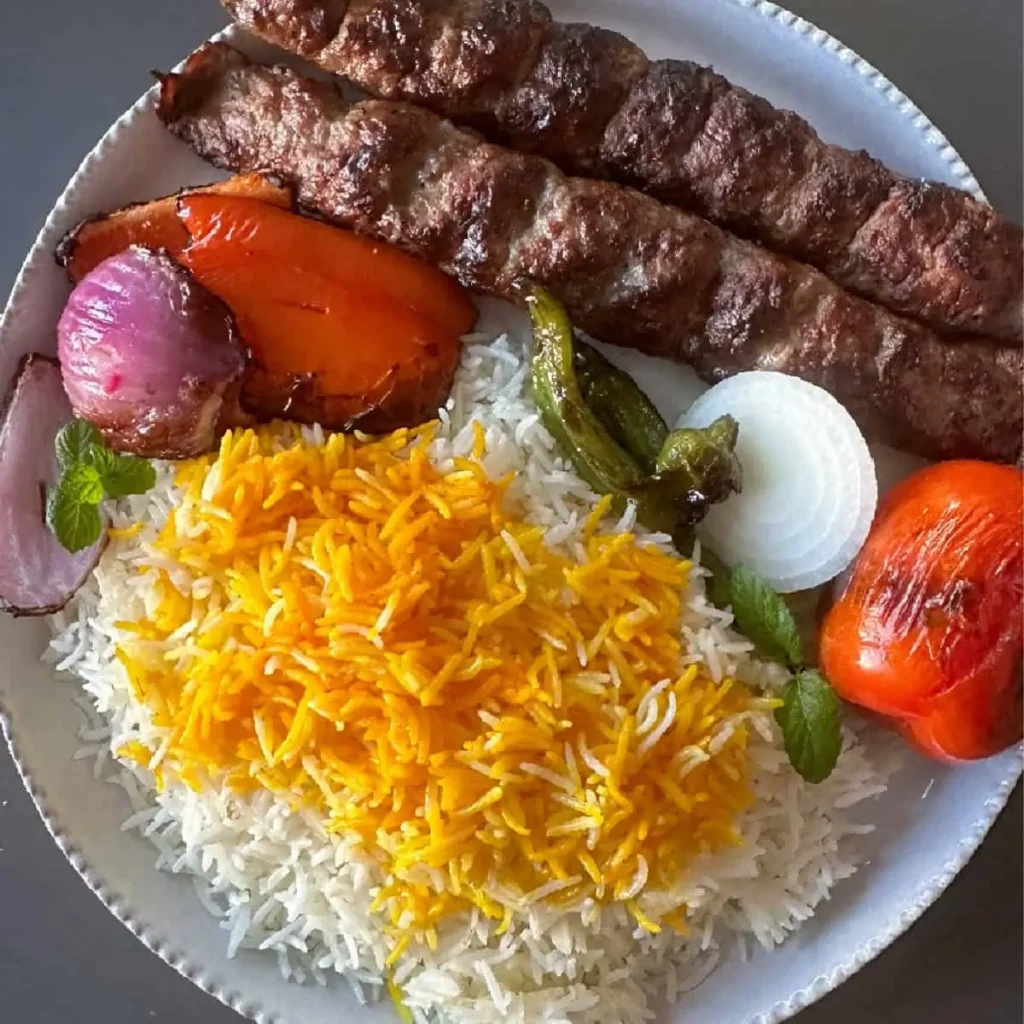
Ingredients:
Salt and pepper: To taste
Ground lamb and beef mix: 500g
Onion: 2 medium-sized
Koobideh Kabob is simple yet packed with flavor, making it a favorite at Iranian parties and picnics. The secret lies in using freshly ground meat (ideally lamb and beef mixed) and thoroughly kneading it with grated onion. Chill the mixture before grilling, and always sculpt the kabobs on wet skewers to achieve the perfect shape!
Instructions:
- Grate the onion, squeeze out excess liquid, and mix with the finely ground meat.
- Add salt and pepper, then knead extensively until the mixture is firm.
- Chill the mixture in the fridge for at least an hour.
- Shape the meat onto metal skewers and grill over hot charcoal until golden brown.
- Serve with flatbread, grilled tomatoes, and fresh herbs.
Secret Tip:
Squeeze the grated onions well—too much liquid will make the kebab mix fall apart on the grill.
3. Tahchine Morgh: Layered Saffron Rice Cake
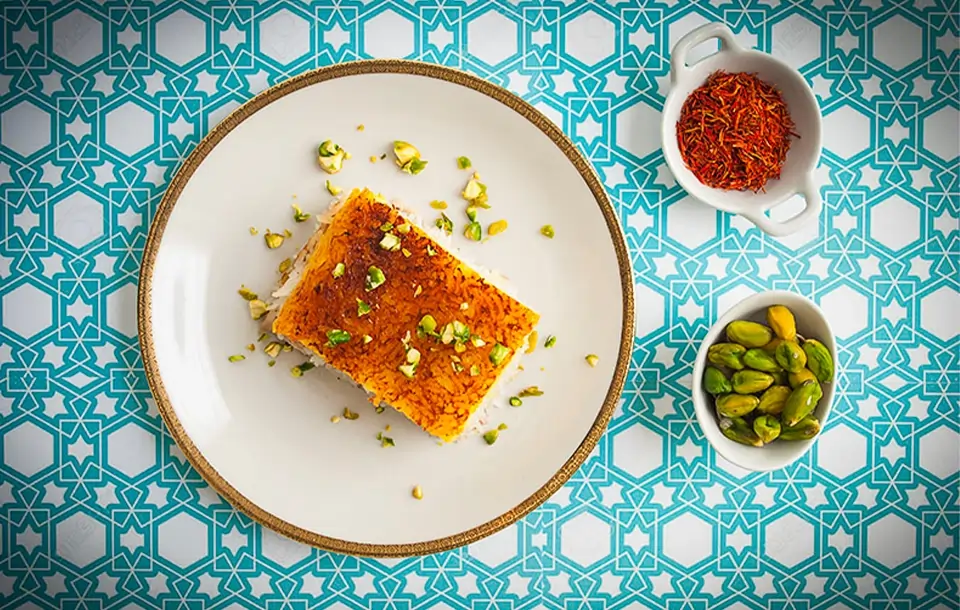
Ingredients:
Oil/butter: As needed
Rice: 3 cups
Chicken (shredded): 300g
Thick yogurt: 1 cup
Saffron water: Generous amount
Egg yolks: 3
Tahchine Morgh is as much a visual feast as a culinary one. Its golden layers of saffron-infused rice cake called “tahdig” filled with seasoned chicken make it a common choice for celebrations. To achieve perfect layers, ensure the yogurt mixture is deeply incorporated into the rice, and don’t skimp on the saffron.
How to cook Tahchin:
- Mix cooked rice with yogurt, saffron water, and egg yolks.
- Grease the base of your pan and pour in half the rice mixture. Add the shredded chicken, and top with the remaining rice.
- Cover and cook on low until the rice forms a golden crust.
- Flip and serve adorned with fresh herbs or fried barberries.
Secret Tip:
Let your Tahchin rest 10 minutes before unmolding—the crust will hold together better and slice beautifully
4. Gheymeh Bademjoon (Eggplant & Split Pea Stew)
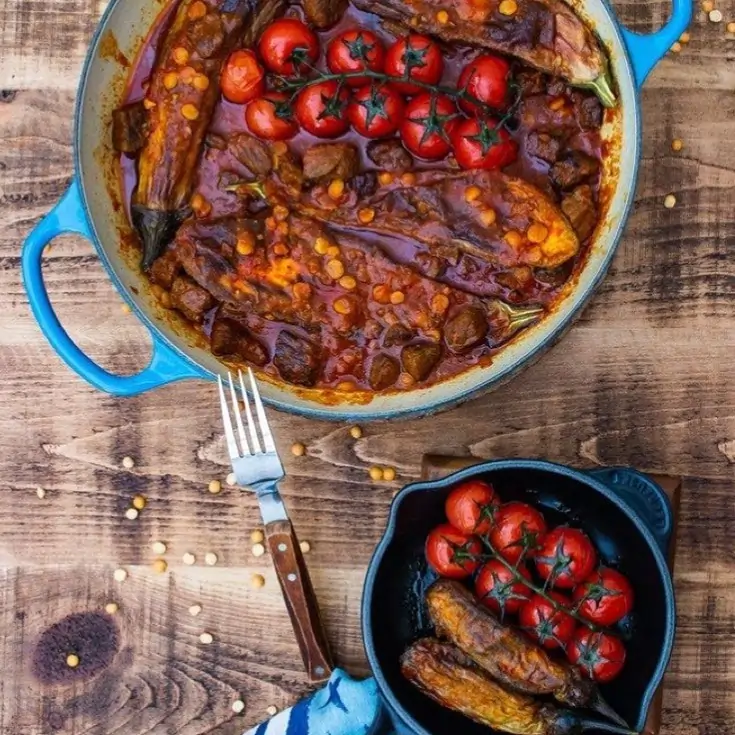
Ingredients
Oil
Eggplant
Yellow split peas
Onion
Garlic
Mushrooms (for a vegan version)
Tomato paste
Turmeric, cumin, coriander, red pepper flakes
Vegetable broth (or water)
Gheymeh Bademjoon is a classic Persian stew that pairs velvety eggplant with yellow split peas in a richly seasoned tomato base. Traditionally served with fluffy Persian rice, it’s both hearty and deeply comforting—an icon at family gatherings or special dinners.
How to Cook:
- Peel and salt the eggplant slices, then fry until golden; set aside.
- In a large pot, sauté onions and garlic in oil until golden.
- Add turmeric, cumin, coriander, and red pepper flakes for 1–2 minutes.
- Stir in split peas; toss for a minute.
- Add tomato paste and sauté until oil changes color.
- Pour in broth and simmer peas for 25-30 minutes.
- Gently add fried eggplant and mushrooms, then simmer until the split peas and eggplant are meltingly tender (30 more minutes). Adjust salt and pepper.
Secret Tip:
Salt the eggplant and let it sit before frying—this draws out bitterness for a sweeter, silkier result.
5. Kotlet (Persian Meat & Potato Patties)
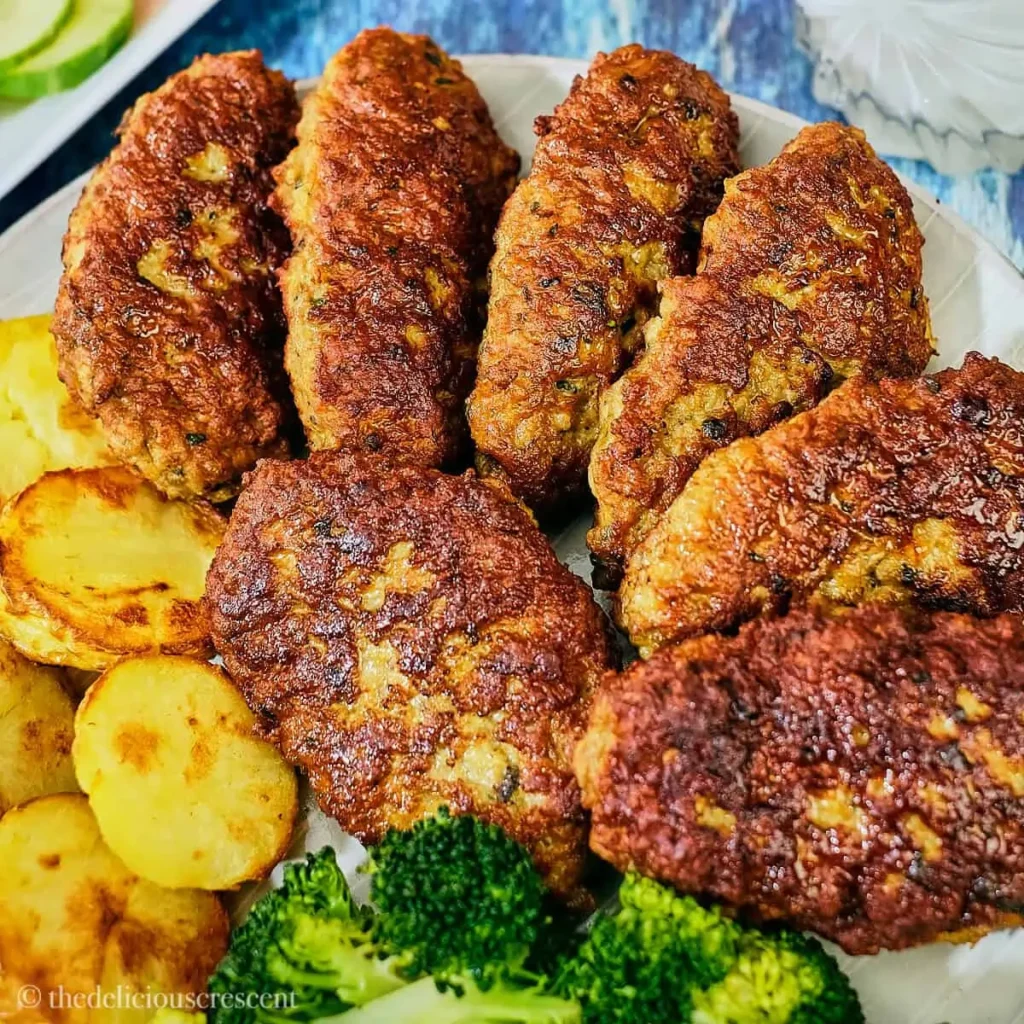
Ingredients:
Oil for frying
Lean ground beef or lamb
Russet potatoes (boiled and mashed)
Onion (grated)
Eggs
Salt, pepper, turmeric
Flour (optional, for dusting)
Kotlet is Iran’s answer to the croquette—a crispy, golden fritter of ground meat and creamy potatoes, scented with onion and mild spices. It’s perfect hot or cold, whether served with bread or as a snack on trips and picnics.
How to Cook:
- Boil and mash potatoes. Let cool slightly.
- Mix ground meat, mashed potatoes, grated onion, eggs, salt, pepper, and turmeric until very smooth.
- Shape into small patties; optionally, dust lightly with flour.
- Heat oil in a skillet over medium. Fry patties in batches, making a slight dimple on each for even cooking, until deeply browned on both sides (3-4 minutes per side).
- Drain on paper towels.
Secret Tip:
Chill the mix for 30 minutes before shaping—this helps the kotlets hold their form and makes them extra crisp.
6. Zereshk Polo ba Morgh (Barberry Rice with Saffron Chicken)
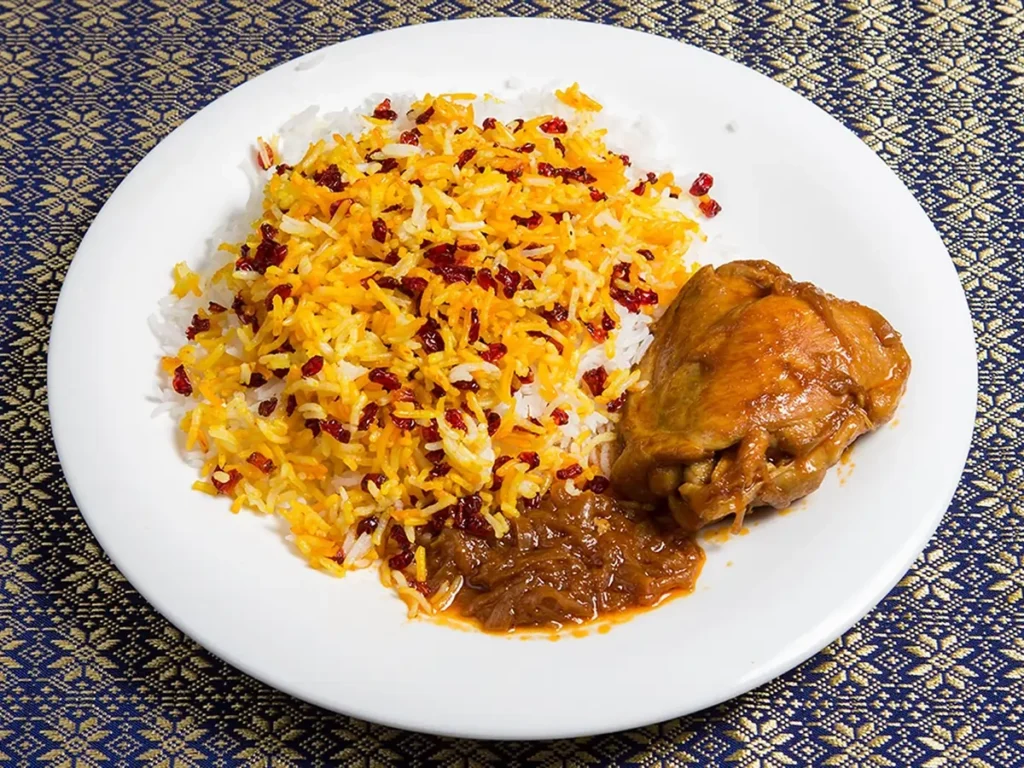
Ingredients:
Fresh lemon juice
Long-grain basmati rice
Chicken breasts or thighs
Onion, garlic
Tomato paste
Turmeric, saffron
Barberries (zereshk)
Butter, oil, sugar
Few dishes are as festive as Zereshk Polo ba Morgh, where tart barberries and luxurious saffron rice meet juicy chicken braised in a tomato and turmeric-infused sauce. It’s a staple at Iranian celebrations and weddings, shining with gem-like colors.
How to Cook:
- Marinate chicken with turmeric, lemon juice, salt, and pepper; sauté onions in oil, then brown chicken on both sides.
- Add tomato paste and a splash of water; cover and simmer until tender (30–40 minutes).
- For rice: parboil rice, then steam until fluffy.
- Soak, rinse, and fry barberries gently in butter with sugar and brewed saffron.
- Layer the saffron barberries on top of rice and serve with chicken and its sauce.
Secret Tip:
Never overcook barberries—they burn quickly. A quick sauté preserves their tartness and jewel-red color.
7. Fesenjoon (Chicken in Walnut & Pomegranate Stew)
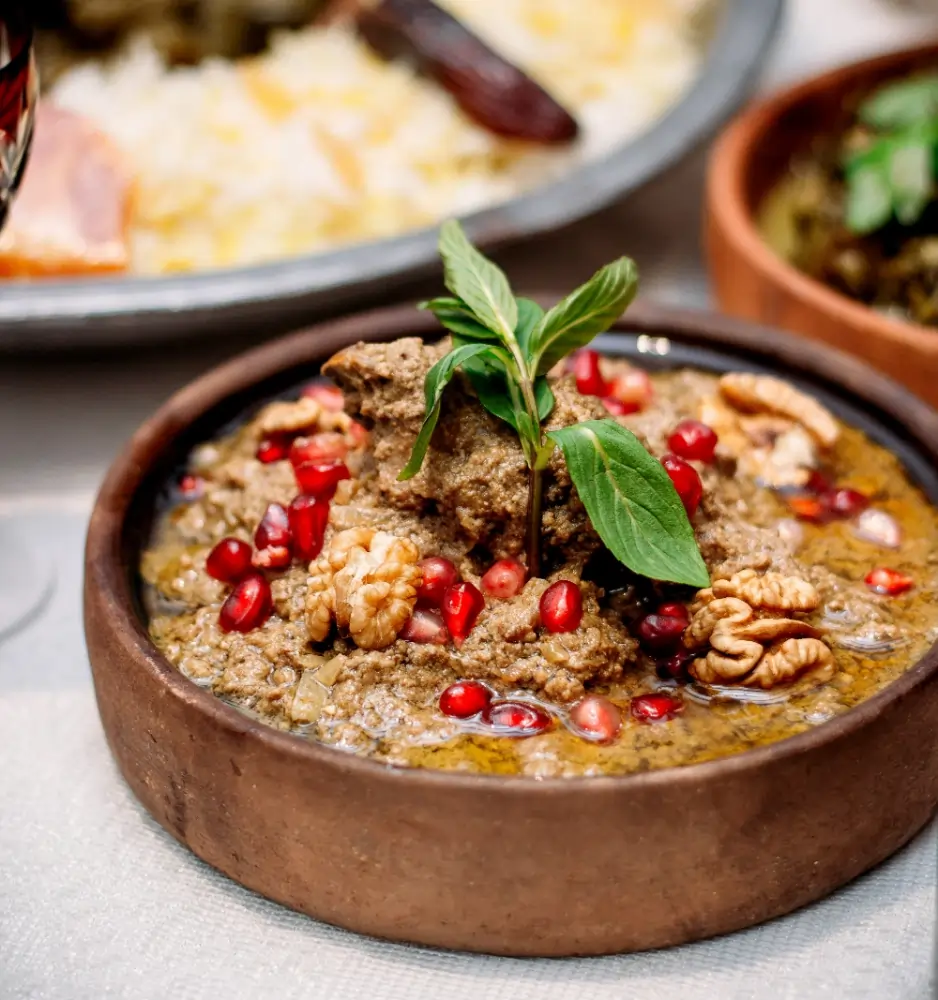
Ingredients:
Water
Chicken pieces (legs or breasts)
Ground walnuts
Onion
Pomegranate molasses/concentrate
Turmeric, salt, pepper
Oil or butter
Fesenjoon stew is one of Iran’s most complex and elegant stews, uniting tender chicken with finely ground walnuts and a pomegranate molasses sauce. Sweet, tangy, and rich, it’s a winter favorite, often enjoyed at celebrations.
How to Cook
- Sauté chopped onion in oil. Add chicken pieces, browning on all sides with turmeric, salt, and pepper.
- Move chicken to the side, then add ground walnuts. Fry until aromatic.
- Pour in water and pomegranate molasses. Return chicken to liquid.
- Simmer over low heat for at least 1–2 hours, stirring frequently; sauce should thicken and darken, oils will surface.
- Adjust with sugar or extra pomegranate for desired sweet-tart balance.
Secret Tip
Use very finely ground walnuts and cook low and slow—the sauce only achieves its lush, thick character after at least an hour of gentle simmering.
8. Makarooni (Persian Crispy-Bottom Pasta)
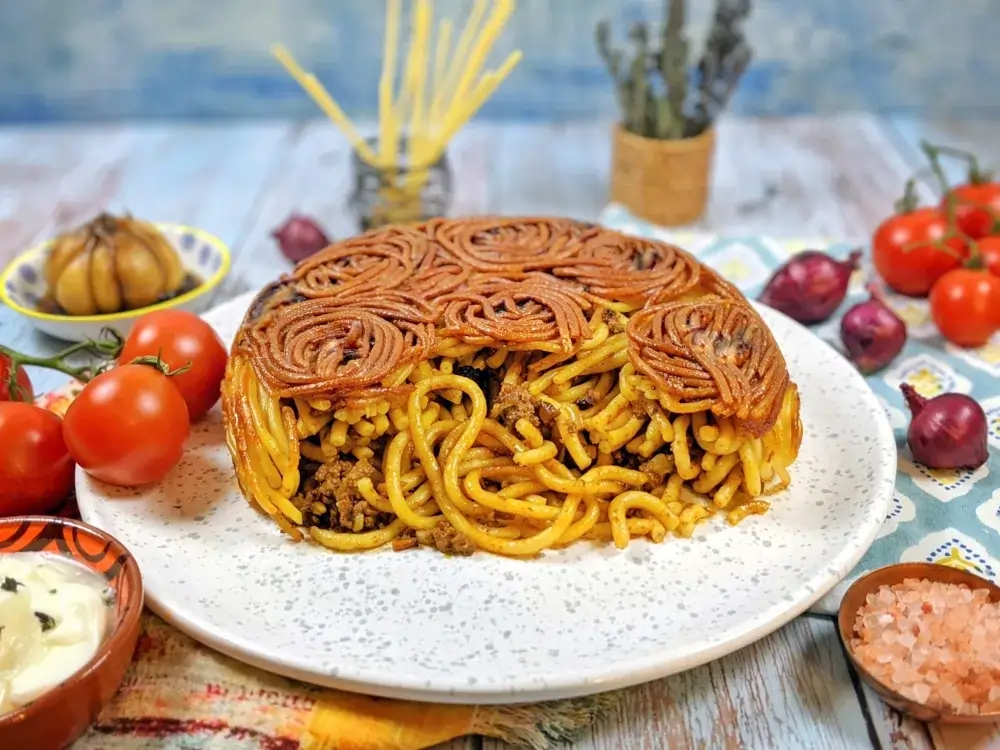
Ingredients:
(Optional: thin potato slices for extra crispy layer)
Spaghetti or any pasta
Ground beef or turkey (optional)
Onion, garlic
Tomato paste
Salt, pepper, turmeric
Oil
Makarooni, the Persian version of spaghetti, features a classic tomato-meat sauce paired with pasta, but with one Iranian twist: it’s cooked on the stove until the bottom forms a crispy Tahdig, potato-chip-like crust!
How to Cook:
- Boil pasta until just al dente.
- Brown onions and meat in oil; stir in tomato paste and spices, add a splash of water. Simmer into a thick sauce.
- Mix pasta and sauce together.
- In a nonstick pot, spread oil and/or thin potato slices for extra crunch. Layer the pasta mixture over.
- Cover and cook on very low heat for 30–40 minutes, so the bottom crisps up (“macaroni tahdig”).
- Invert onto a platter so the crispy base is on top.
Secret Tip:
For an extra crispy tahdig, place a layer of sliced potatoes at the bottom of your pot before adding the pasta.
Conclusion
From the aromatic stews of Gheymeh Bademjoon and Fesenjoon to the celebratory layers of Tahchin Morgh and the street-food charm of Kotlet and Kabab Koobideh, Iranian cuisine is a masterclass in patience, flavor, and texture. Each dish has its own rhythm, relying on careful layering, slow cooking, and attention to detail. Master the essential secret for each recipe with abhavij, and you’ll bring the true magic of the Persian table into your own kitchen.
So, roll up your sleeves, and let’s bring a little Persian magic to your kitchen!

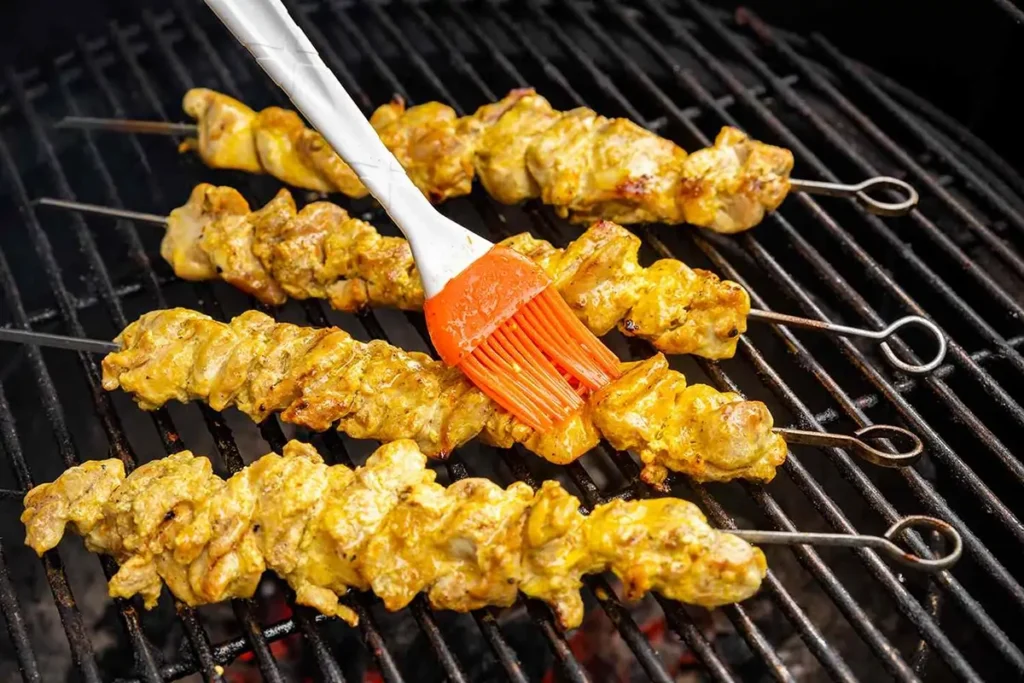
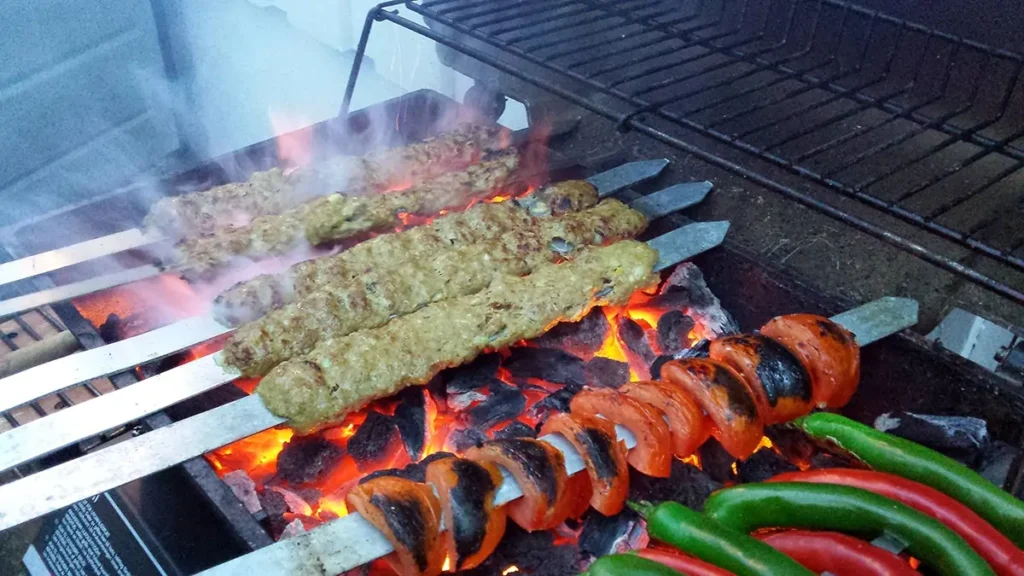
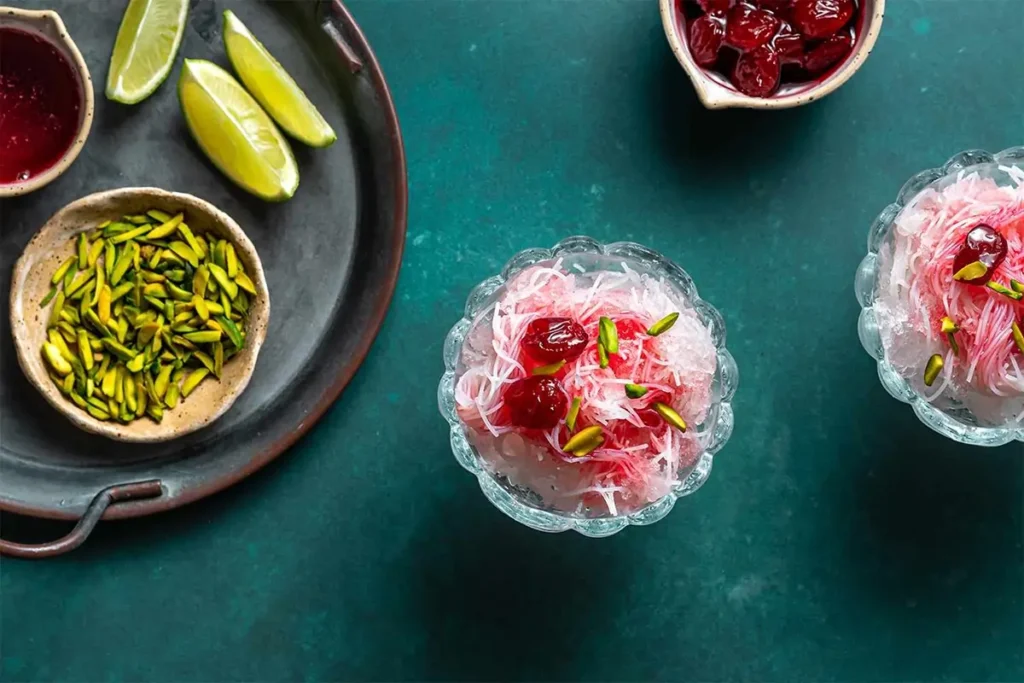
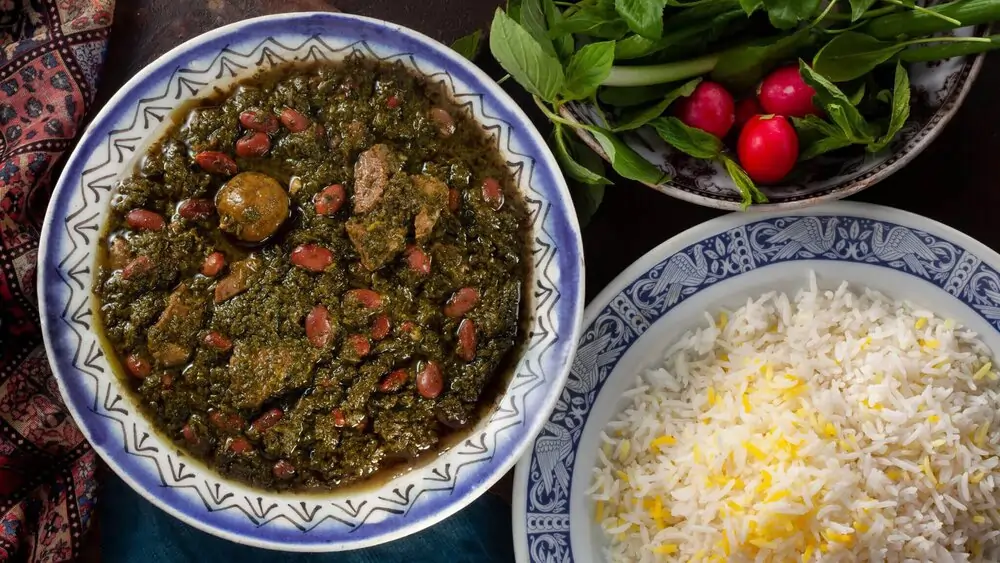
Responses